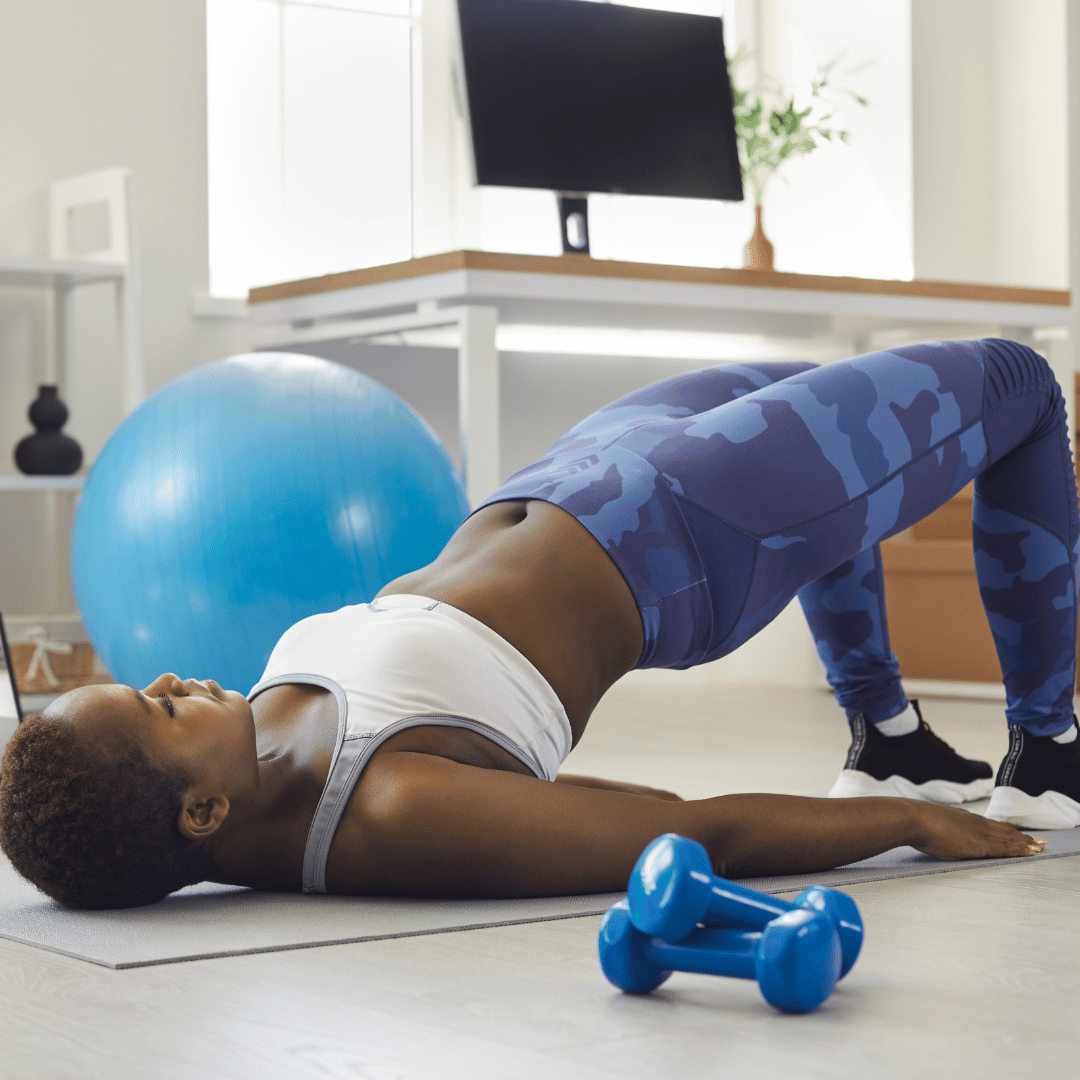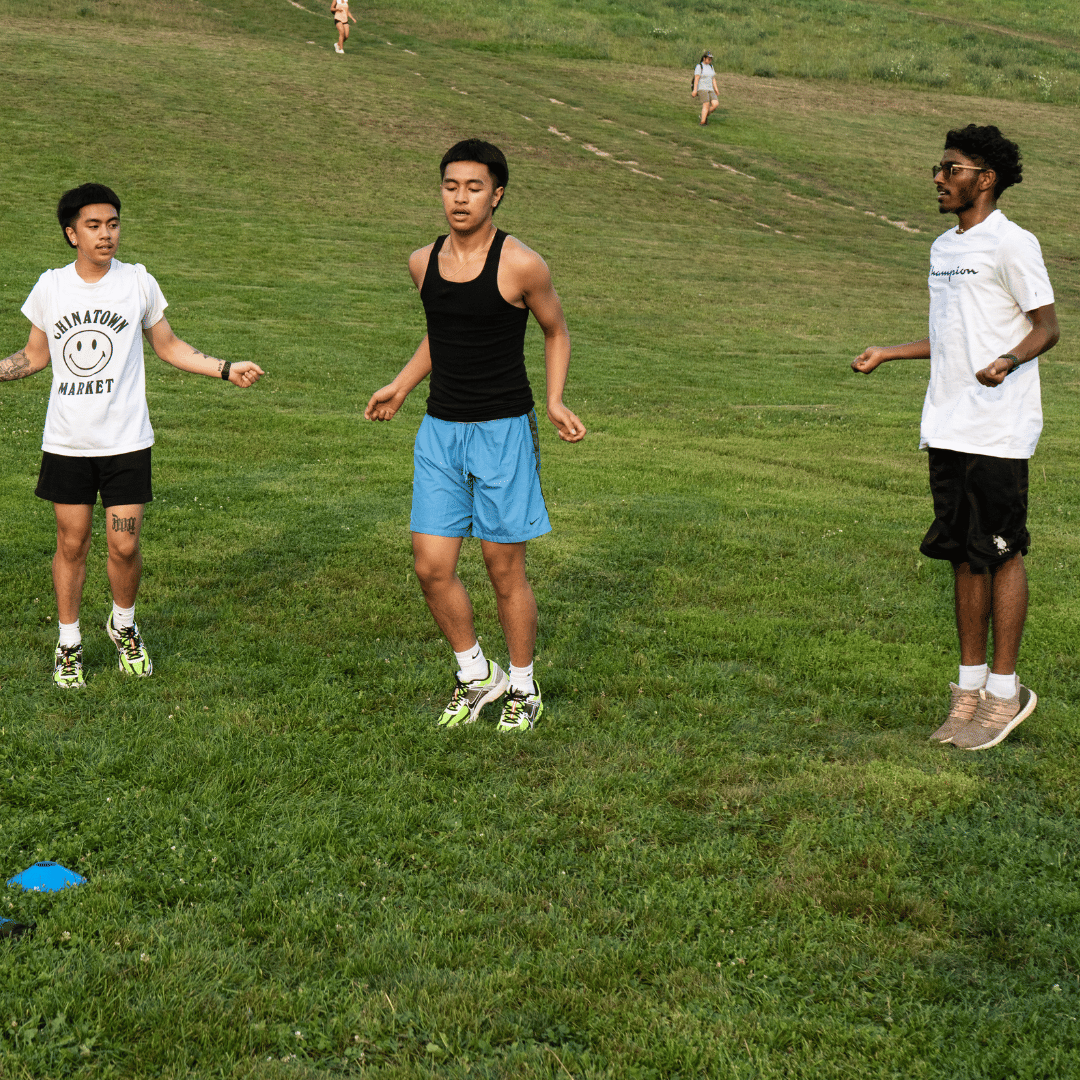High knees, also known as high knee running, is a cardiovascular and strength training exercise that has been a staple in many fitness routines. With its fast-paced, high-impact movement, high knees are an effective way to get in shape and improve overall fitness. At Boardgains, we love incorporating this fun and challenging exercise into our fitness board game. In this article, we'll discuss the benefits of high knees, the correct way to do them, and the best tips for getting the most out of this exercise.

What is the correct way to do High Knees and what are some modifications?
How To High Knees (English):
-
Stand with your feet hip-width apart and your arms at your sides.
- Lift your right knee up to hip level and raise the opposite arm but keep the core tight to support your back.
- Then bring it back to the ground and simultaneously lift your left knee up to hip level and raise the opposite arm.
- Repeat the movement, alternating back and forth in a jogging motion.
Rep Count: Each high knee left & right counts as 2 Reps.
Modification: Knee Marches
1. What are High Knees?
High knees are a dynamic exercise that involves running in place while bringing your knees up towards your chest. The exercise is usually performed at a moderate to fast pace and can be done with or without additional weights. High knees are often used as a warm-up exercise before more intense workouts and can also be used as part of a cardio or interval training routine.
2. Why Should You Do High Knees?
High knees are a great exercise for improving your cardiovascular health and overall fitness level. They are a high-intensity exercise that can help you burn a lot of calories and improve your endurance. High knees also help to strengthen your lower body, especially your quadriceps, hamstrings, and glutes. Additionally, high knees engage your core muscles, which can help improve your balance and stability.
3. How to do High Knees Properly
To do high knees properly, follow these steps:
- Stand tall with your feet hip-width apart.
- Start running in place, lifting your knees as high as possible towards your chest.
- Alternate between your left and right knee, ensuring that each knee is lifted as high as possible.
- Keep your upper body straight and engaged, and use your core muscles to help lift your knees.
- Land on the balls of your feet and use a soft landing to minimize impact.
4. Tips for Performing High Knees
- Start with a slow pace and gradually increase your speed as you become more comfortable with the exercise.
- Focus on lifting your knees as high as possible towards your chest, rather than on speed.
- Keep your upper body straight and engage your core muscles to help lift your knees.
- Land on the balls of your feet and use a soft landing to minimize impact.
- Breathe deeply and rhythmically throughout the exercise.
5. Variations of High Knees
There are many variations of high knees that you can try to add variety to your workout routine. Here are some popular variations:
High Knees with Twist
Start with the basic high knee exercise, but twist your torso to the left and right as you lift your knees. This variation engages your oblique muscles and helps improve your balance and coordination.
High Knees with Arms
In this variation, add arm movements to the basic high knee exercise. Lift your arms as you lift your knees, bringing your elbows to your sides. This variation helps to increase the intensity of the exercise and works your upper body muscles.
High Knees with Lateral Steps
Start with the basic high knee exercise, but add a lateral step to each side as you lift your knees. This variation helps to engage your hip abductors and adductors, as well as your glutes and quadriceps.
6. Benefits of High Knees
High knees offer a variety of benefits, including:
Cardiovascular Health
High knees are a great way to improve your cardiovascular health and endurance. This exercise increases your heart rate, which helps to strengthen your heart and lungs and improve blood flow throughout your body.
Lower Body Strength
High knees work your quadriceps, hamstrings, and glutes, helping to improve lower body strength and muscle tone. This can lead to improved athletic performance, better balance and stability, and a reduced risk of injury.
Core Strength
High knees engage your core muscles, including your abdominals and lower back muscles. This helps to improve your balance and stability, and can lead to better posture and reduced risk of back pain.
Improves Balance and Coordination
High knees require you to maintain balance and coordination while running in place and lifting your knees. Practicing this exercise can help improve your balance and coordination, which can translate to better performance in other exercises and activities.
7. Common Mistakes to Avoid
When performing high knees, it's important to avoid these common mistakes:
- Lifting your knees too high and compromising your form
- Leaning forward or backward, which can strain your back and neck
- Landing too hard on your feet, which can lead to joint pain or injury
- Forgetting to engage your core muscles, which can compromise your balance and stability
8. Precautions and Contraindications
While high knees are generally safe for most people, there are a few precautions to keep in mind:
- If you have a history of knee or joint pain, talk to your doctor before starting this exercise.
- If you feel pain or discomfort during high knees, stop immediately and rest.
- Start with a slow pace and gradually increase your speed and intensity to avoid injury.
- Wear supportive shoes and avoid hard surfaces to minimize impact on your joints.
9. Conclusion
High knees are a fun and effective exercise that can help improve your cardiovascular health, lower body strength, core strength, balance, and coordination. By following the proper form, variations, and precautions outlined in this guide, you can safely and effectively incorporate high knees into your fitness routine.
10. FAQs
-
Can high knees help me lose weight?
- Yes, high knees can help you burn calories and lose weight when combined with a healthy diet and other exercises.
-
How often should I do high knees?
- It's recommended to do high knees for at least 30 minutes, 3-5 times per week, to see results.
-
Can I do high knees with weights?
- Yes, you can add ankle or wrist weights to increase the intensity of the exercise.
-
Are high knees suitable for beginners?
- Yes, high knees are a beginner-friendly exercise that can be modified to suit your fitness level.
-
Can high knees help improve my running form?
- Yes, practicing high knees can help improve your running form, as it helps to strengthen the muscles used in running and improve your balance and coordination.










Leave a comment
This site is protected by hCaptcha and the hCaptcha Privacy Policy and Terms of Service apply.